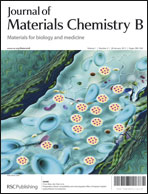In this work, arbitrarily shaped multi-membrane hydrogels were successfully fabricated from gel-core templates using the layer-by-layer (LbL) method. Namely, the first gel membrane layer was formed around a gel-core template when the crosslinker loaded gel-core was soaked in a polysaccharide solution, and it was then ripened in a crosslinker solution, in which the crosslinker was loaded for the fabrication of the following layer. The formation and control of the gel membrane layer were studied in detail. The results indicated that a reasonably rapid crosslinking of the polysaccharide was essential for the successful preparation of a multi-membrane hydrogel, irrespective of chemical or physical crosslinking. The formation of a gel membrane layer was found to be controlled by the diffusion of the crosslinker. The chemically and the physically crosslinked multi-membrane hydrogels were characterized, and the chemically crosslinked chitosan multi-membrane hydrogel exhibited a unique sub-layered microstructure. The chitosan multi-membrane hydrogel which was sensitive to pH was fabricated using terephthalaldehyde as the crosslinker, and the hydrogel displayed LbL disintegration in acidic medium. Chondrocytes were cultivated in the presence of the multi-membrane hydrogel, and they could be easily attached to proliferate quickly. Because of the arbitrary shape, solid or hollow structure, pH sensitivity and biocompatibility, the polysaccharide multi-membrane hydrogels are promising materials for biomedical applications.

You have access to this article
 Please wait while we load your content...
Something went wrong. Try again?
Please wait while we load your content...
Something went wrong. Try again?


 Please wait while we load your content...
Please wait while we load your content...